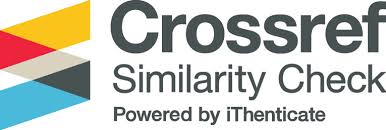Acute Toxicity of Sembukan Extract (Paederia scandens (Lour.) Merr.) in Swiss Webster Mice (Mus musculus L.)
Abstract
Sembukan (Paederia scandens (Lour.) Merr. belonging to Rubiaceae family that grows wild, sometimes was used as animal feed and traditional herbal medicine. Therefore, it is important to determine the safety of sembukan when consumed or used as a herbal medicine. This study aimed to determine the potential acute toxicity of the extract of sembukan using Organisation for Economic Co-operation and Development (OECD) 423 method which measured the clinical symptoms caused, and histopathologic of liver, kidney, and heart disease due to oral administration.
Fifteen female Swiss Webster mouse weighing 25-35 gram used in this study. The procedure of this study followed the OECD method 423 using an initial dose of 300 mg/kg BW sembukan extract. Histopathological examination was done hematoxylin-eosin staining. The observation of histopathology and clinical toxicity symptoms were analyzed descriptively, while data changes on body weight of animals, organ weights, and the amount of feed intake was analyzed statistically.
The results showed sembukan extract is safe to use. According to the Globally Harmonized System Classification (GHS), the potential for acute oral toxicity of the extract sembukan included in category 5 (not clarified) with LD50 cut-off > 2000-5000 mg/kg BW. Giving the test preparation did not affect body weight, feed intake, clinical symptoms of toxicity,and there was no pathological changes in the heart organ.













